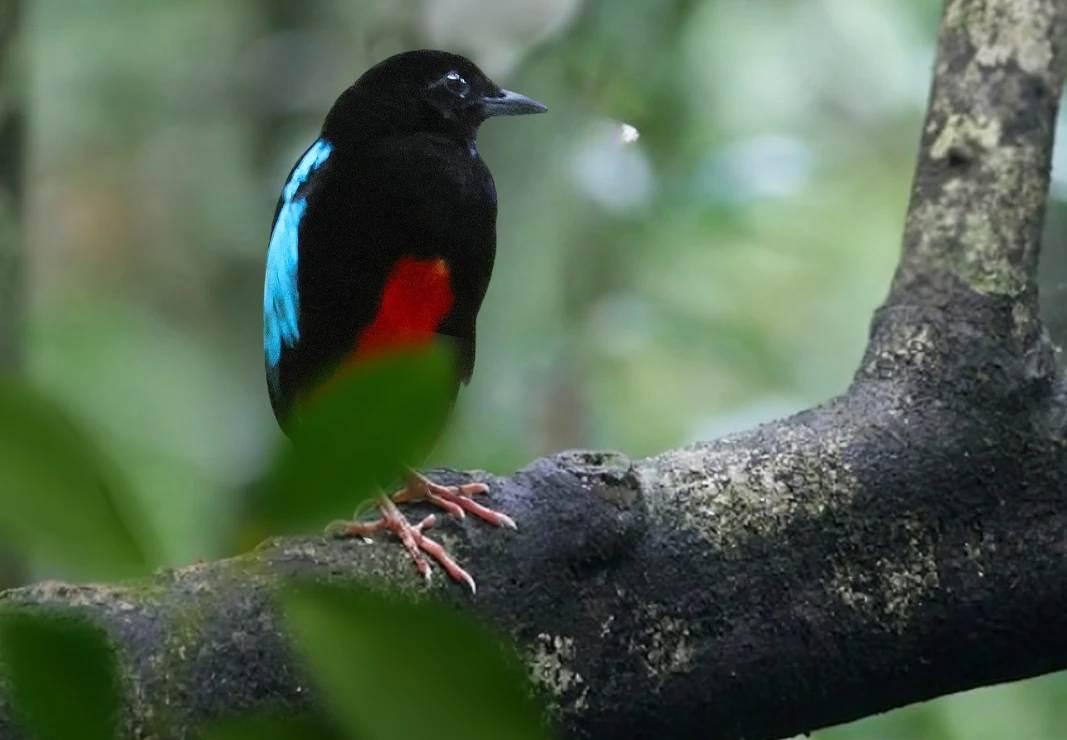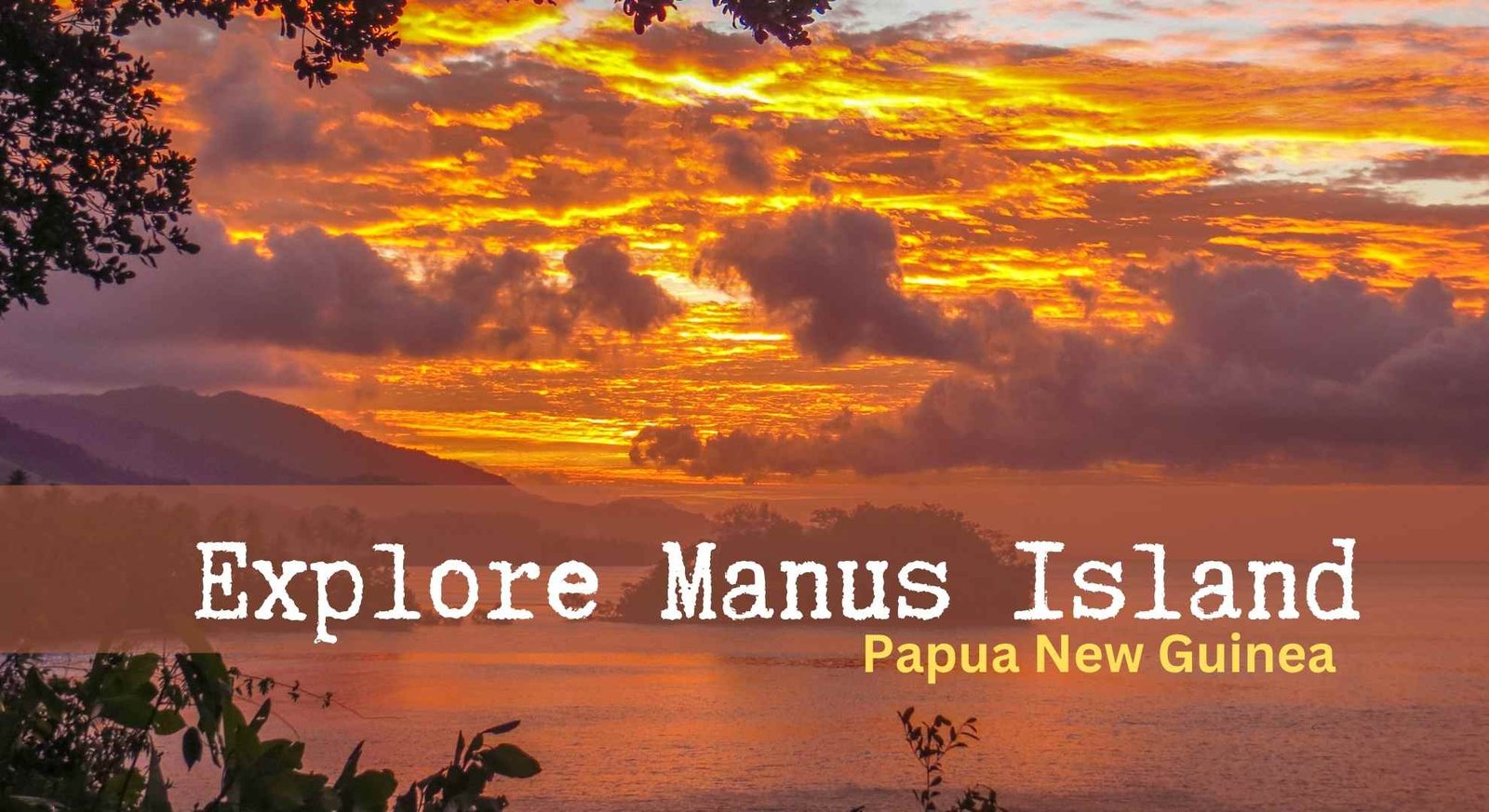Manus Island: The Last Frontier for Adventure Travel in Papua New Guinea.
Home › Manus Island: The Last Frontier for Adventure Travel in Papua New Guinea.
How to Explore Manus Island in Papua New Guinea
Since 2014, I have travelled to some of the most remote parts of Papua New Guinea for my photography work. On my most recent trip, I reached a place few have heard of and even fewer have visited—Manus Island. It is not part of any mainstream travel circuit. But I can say this: Manus is a real find. Tucked deep in the Bismarck Sea, it sits quietly away from the tourist map. You will find intact beaches, a dense rainforest, and a handful of birds that occur nowhere else. There is no nightlife, no souvenir stalls, and hardly any road traffic. What you do get is quiet time, friendly faces, and a sense that nature is still in charge. The people live slow, and you begin to match their pace after a day or two. It is the kind of place that reminds you that not all destinations have to be loud to be memorable.
The Forests of Manus Island
The forests here feel untouched. I walked through tall groves with orchids wrapped around tree trunks and the sound of birds that were hard to identify. Eight bird species on the island are found nowhere else. The Superb Pitta is the most talked-about, but the others are just as important to see. The mangroves are alive with crabs, shellfish, and marine birds. Inland, the canopy is thick and full of movement. The place is not overrun by birders yet, but that will change. The Emerald Snail is another attraction. It is shiny, bright green, and very rare. If you like unusual forest species, Manus will not disappoint.
How to reach Manus Island?
There are two ways.
The better one is to fly to Port Moresby and take a domestic flight to Momote Airport on Manus. It is safe, short, and easy. The flight takes two hours. The other option is by sea, from places like Lae or Wewak. The journey by boat takes 24 to 48 hours, depending on the weather. Unless you are doing research or travelling on a tight budget, I would suggest you avoid the sea route. It is not practical for international travellers.
Wildlife Watching on Manus Island
As soon as you walk out of the terminal at Momote Airport, there is a signboard with a Superb Pitta on it. You know why you have come. The forest is hot, wet, and full of mosquitoes. I spent four full days trying to photograph the Pitta. Got it finally, but it was tough work. Apart from the Pitta, there are seven other endemics here. There are snakes, snails, butterflies, and a range of forest mammals as well. The guides are few, and they work by word of mouth. There is no formal birding network here yet, which makes planning harder but also more exciting.
Where to Go Birding on Manus Island
Birds are spread across the island, but some areas stood out during my visit. Bipi Island had good forest cover. Hauwai Village and Nggwal Forest were also productive. Baluan Island had a calm feel and enough birdlife to warrant a full-day trip. Lorengau, the provincial capital, has a conservation area just outside town. Most of these places are reachable by boat or by hiring local transport. The birding scene is still early here. Getting a guide can be hit or miss. If you need help with planning, feel free to write to me at sabu@endemicexplorer.com
Top 5 Natural Beaches and Sights in Manus Island
Tutum Bay is only accessible by boat, but it is worth the effort. The water is clear, and the reef has sea turtles and reef fish. Visit between May and October.
Lorengau is where most visitors stay. It is small, quiet, and surrounded by hills. The annual Manus Festival happens in March and is a good chance to see traditional dances.
Admiralty Islands are a group of islands around Manus. These are good for snorkelling, birding, and day trips by boat. Wildlife is abundant.
Cape Wom has some of the best ocean views on the island. You should go there early morning or around sunset. Great for seabird spotting.
Rambutso Island is volcanic and rugged. You can hike and get a sense of the island’s geological story. July to September is the best time to go.
Trekking in Manus Island
There are some good treks here if you are keen on walking. Mt Dremsel is the highest climb, starting from Arawa Village. It takes four to five hours and offers a view across the island.
Bipi Village to Bipi Peak is shorter, about three to four hours, and passes through lush rainforest.
Naringel to Pam Village is a six-hour trek and gives you access to untouched forest.
Lorengau to Bui is an easier one. Two to three hours, mostly coastal, and suitable for anyone with basic fitness.
Admiralty Islands Trek offers multiple trails on different islands. These vary in length and can be customised. You will need a local guide for all of these. Try to trek during the dry season from June to September.
Where to stay on Manus Island?
Accommodation on Manus Island
There are no large hotels. Most places are simple. I stayed at Seedler Bay Hotel, which is a 20-minute drive from the airport. The rooms are clean, basic, and made for people like us—who do not mind a bit of roughing it. The views from the property are excellent, and the sunsets were the highlight of my evenings. If you are expecting luxury, this is not your island. But if you are here for nature, it is enough.
Endemic Explorer curates professional birding and wildlife expeditions across remote regions in Asia, Africa, and the Pacific. If you are looking to explore Manus Island or plan a trip to Papua New Guinea tailored around nature and photography, visit www.endemicexplorer.com or email us at info@endemicexplorer.com. We work closely with local communities to bring you immersive, safe, and meaningful travel experiences.
Latest Post

Papua New Guinea Bird Photography Tour Report – 2024

Chasing the Super Pitta: A Journey to Manus Island

